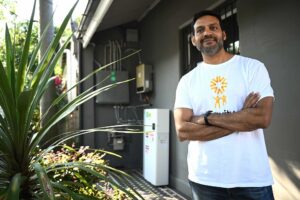In a sense, there is no such thing as climate change denial. No one denies that climate changes (in fact, the most common climate myth is the argument that past climate change is evidence that current global warming is also natural). Then what is being denied? Quite simply, the scientific consensus that humans are disrupting the climate. A more appropriate term would be “consensus denial”.
There are two aspects to scientific consensus. Most importantly, you need a consensus of evidence – many different measurements pointing to a single, consistent conclusion. As the evidence piles up, you inevitably end up with near-unanimous agreement among actively researching scientists: aconsensus of scientists.
A number of surveys of the climate science community since the early 1990s have measured the level of scientific consensus that humans were causing global warming. Over time, the percentage of climate scientists agreeing that humans are causing global warming has steadily increased. As the body of evidence grows, the consensus is getting stronger.
Two recent studies adopting different approaches have arrived at strikingly consistent results. A survey of over 3000 Earth scientists found that as the climate expertise increased, so did agreement about human-caused global warming. For climate scientists actively publishing climate research (79 scientists in total), there was 97% agreement.
This result was confirmed in a separate analysis compiling a list of scientists who had made public declarations on climate change, both supporting and rejecting the consensus. Among scientists who had published peer-reviewed climate papers (908 scientists in total), the same result: 97% agreement.
While individual scientists have their personal views on climate change, they must back up their opinions with evidence-based research that withstands the scrutiny of the peer-reviewed process. An analysis of peer-reviewed climate papers published from 1993 to 2003 found that out of 928 papers, none rejected the consensus.
Despite these and many other indicators of consensus (I could go on), there is a gaping chasm between reality and the perceived consensus among the general public. Polls from 1997 to 2007 found that around 60% of Americans believe there is significant disagreement among scientists about whether global warming was happening. A 2012 Pew poll found less than half of Americans thought that scientists agreed humans were causing global warming.
The gap between perception and reality has real-world consequences. People who believe that scientists disagree on global warming show less support for climate policy. Consequently, a key strategy of opponents of climate action for over 20 years has been to cast doubt on the scientific consensus and maintain the consensus gap.
How have they achieved this? Hang around and you’ll witness first hand the attack on consensus in the comment threads of this article. The techniques of consensus denial are easily identifiable. In fact, if one rejects an overwhelming scientific consensus, it’s inevitable that they end up exhibiting some of the following characteristics.
Expect to see reference to dissenting non-experts who appear to be highly qualified while not having published any actual climate research. Fake expert campaigns are launched with disturbing regularity. Recently, a group of NASA retirees issued a press release rejecting the consensus. While possessing no actual climate expertise, they evidently hoped to cash in on the NASA brand.
A prominent Australian fake expert is Ian Plimer, the go-to guy for political leaders and fossil fuel billionaires. He hasn’t published a single peer-reviewed paper on climate change.
There should be many cases of cherry picking but how do you identify a genuine cherry pick? When a conclusion from a small selection of data differs from the conclusion from the full body of evidence, that’s cherry picking. For example, a common cherry pick of late is the myth that global warming stopped over the last 16 years. This focus on short periods of temperature data ignores the long-term warming trend. Importantly, it also ignores the fact that over the last 16 years, our planet has been building up heat at a rate of over three Hiroshima bombs worth of energy every second. To deny global warming is to deny the basic fact that our planet is building up heat at an extraordinary rate.
One way of avoiding consensus is to engage in logical fallacies. The most common fallacy employed to deny the human influence on climate change is the non sequitur, Latin for “it does not follow”. The onslaught of Australian extreme weather in 2013 has led to a surge in the fallacy “extreme weather events have happened before therefore humans are not having an influence on current extreme weather”. This is the logical equivalent to arguing that people have died from natural causes in the past so no one ever gets murdered now.
Finally, with consensus denial comes the inevitable conspiracy theories. If you disagree with an entire scientific community, you have to believe they’re all conspiring to deceive you. A conspiracy theorist displays two identifying characteristics. They believe exaggerated claims about the power of the conspirators. The scientific consensus on climate change is endorsed by tens of thousands of climate scientists in countries all over the world. A conspiracy of that magnitude makes the moon landing hoax tame in comparison.
Conspiracy theorists are also immune to new evidence. When climate scientists were accused of falsifying data, nine independent investigations by universities and governments in two countries found no evidence of wrongdoing. How did conspiracy theorists react? By claiming that each investigation was a whitewash and part of the conspiracy! With each new claim of whitewash, the conspiracy grew larger, encompassing more universities and governments.
A key element to meaningful climate action is closing the consensus gap. This means identifying and rebutting the many rhetorical techniques employed to deny the scientific consensus.
This article was adapted from Understanding Climate Change Denial. First published in The Conversation. Reproduced with permission.








